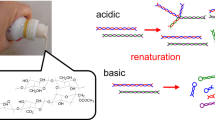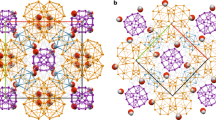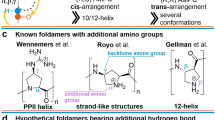Abstract
IN previous communications1,2 from these Laboratories, it has been shown that the molecular chains of a number of synthetic polypeptides can exist in folded and extended configurations, and the X-ray and infra-red evidence which has accumulated so far is entirely consistent with the view that the folded form has the αII-structure proposed by Ambrose and Hanby3. One purpose of this note is to bring forward evidence of a different kind which has a bearing on the structure of the molecular fold.
This is a preview of subscription content, access via your institution
Access options
Subscribe to this journal
Receive 51 print issues and online access
$199.00 per year
only $3.90 per issue
Buy this article
- Purchase on Springer Link
- Instant access to full article PDF
Prices may be subject to local taxes which are calculated during checkout
Similar content being viewed by others
References
Bamford, Hanby and Happey, Nature, 164, 138, 751 (1949); Proc. Roy. Soc. (in course of publication).
Ambrose and Elliott, Nature, 165, 921 (1950); Proc. Roy. Soc. (in course of publication).
Ambrose and Hanby, Nature, 163, 483 (1949).
Astbury and Bell, Nature, 147, 696 (1941).
Author information
Authors and Affiliations
Rights and permissions
About this article
Cite this article
BAMFORD, C., HANBY, W. & HAPPEY, F. Solubilities of the αII- and β-Forms of Synthetic Polypeptides: Evidence for an αII–β Transformation in the Amorphous Phase. Nature 166, 829–830 (1950). https://doi.org/10.1038/166829b0
Issue Date:
DOI: https://doi.org/10.1038/166829b0
This article is cited by
-
Infra-red Spectra of Acetylproline N-Methylamide and the Configuration of a Proline Residue in a Polypeptide Chain
Nature (1952)
-
A Resistant Membrane in Wool
Nature (1951)
-
Water-Soluble Silk: an α-Protein
Nature (1951)
-
Resistant Peripheral Membranes of the Keratin Fibres
Nature (1951)
Comments
By submitting a comment you agree to abide by our Terms and Community Guidelines. If you find something abusive or that does not comply with our terms or guidelines please flag it as inappropriate.



